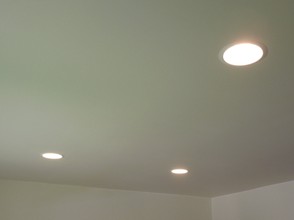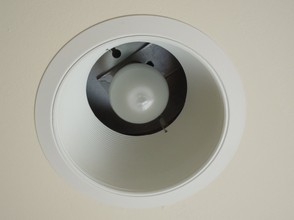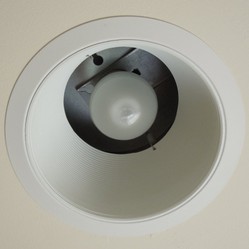Unlike incandescent bulbs, LED bulbs are not necessarily dimmable. Furthermore, some manufacturers will make claims of the bulbs being "dimmable", even if they do not necessarily behave gracefully in dimmers. The good news, however, is that there are better options for using LED bulbs in dimmers than using CFL (Compact Fluorescents), which pair notoriously poorly with dimmers.
If you plan on ordering LED bulbs for a dimmer, I recommend not going with the cheapest (Cree) bulbs, but spending a little more money for the Philips 11 watt bulbs. I've tested these in dimmers, and they behave much better. The Cree bulbs claim to be dimmable, but they buzz and flicker, and cannot be dimmed as low.
If you install a bunch of Philips bulbs on the same dimming circuit, they sometimes flicker (or come on full brightness) if you turn them on on the lowest setting. This is easily remedied by ramping the dimmer up for a few seconds, then dimming it again.
An Advantage of LED's in dimmers: People may be surprised to learn that there is one way in which LED bulbs outperform incandescents in dimmers. This is the fact that they retain the same light color and quality as they are dimmed. Incandescent bulbs, when dimmed lower, become more orange and then reddish at the lowest levels. This can be problematic if you are trying to do anything involving color at low lighting levels. LED's solve this problem beautifully.














 The Shaming of Femininity and Elevation of Masculinityon 07/13/2017
The Shaming of Femininity and Elevation of Masculinityon 07/13/2017
 What is Genderqueer or Non-Binary Gender?on 10/16/2015
What is Genderqueer or Non-Binary Gender?on 10/16/2015
 Resources for Learning Spanish Free Onlineon 04/13/2016
Resources for Learning Spanish Free Onlineon 04/13/2016
 Ways Native Plants Can Help Control Invasive Plantson 05/26/2016
Ways Native Plants Can Help Control Invasive Plantson 05/26/2016



Questions? Comments? Feedback?
I prefer using LED light bulbs. You are right, they last longer and also has better light quality.
Switching over as bulbs burn out is a great way to do things, if you're upgrading from CFL's to LED's.
I've been using CFLs almost exclusively for years. I started even before the prices dropped, and it was worth it. I'll be switching to LEDs as they need to be replaced.